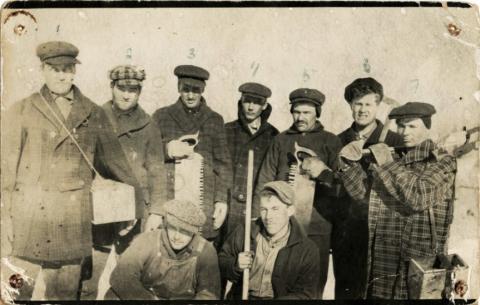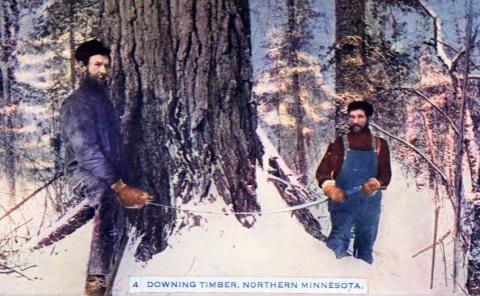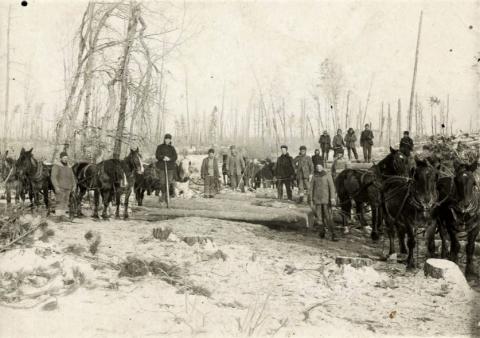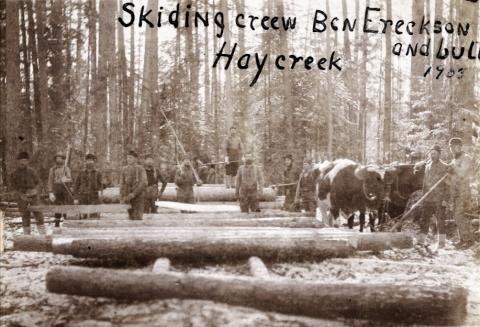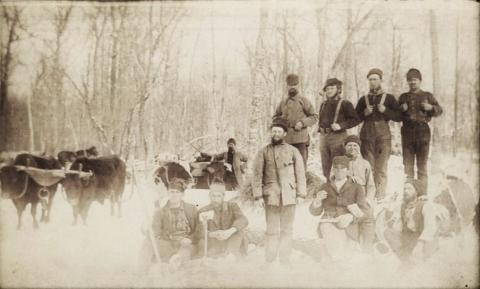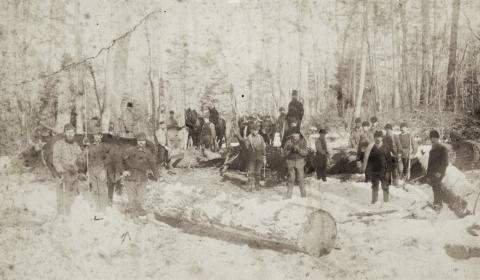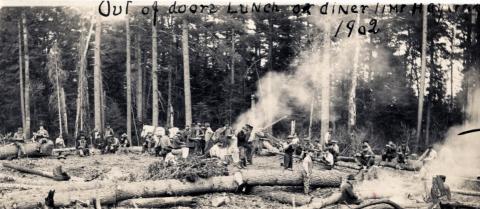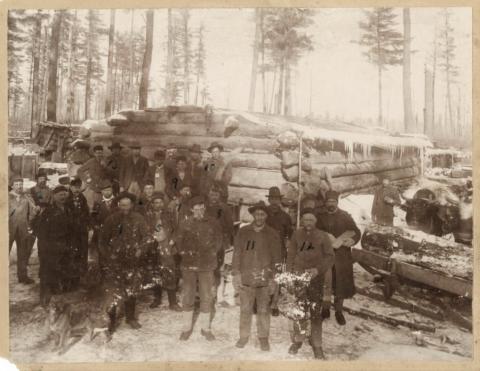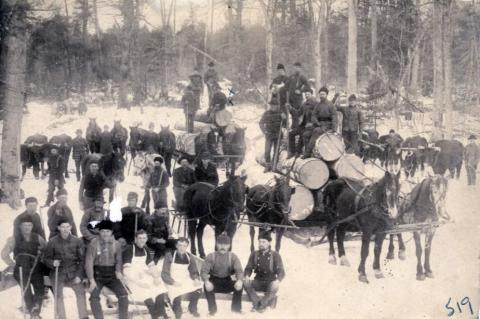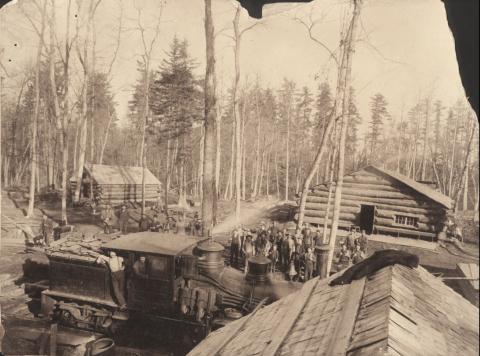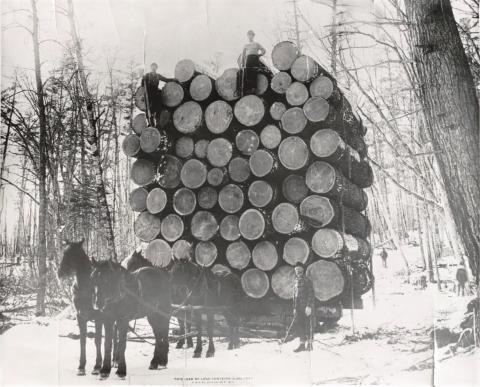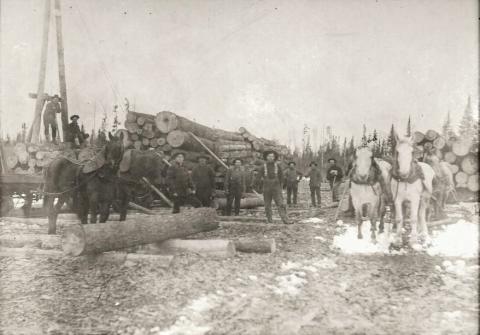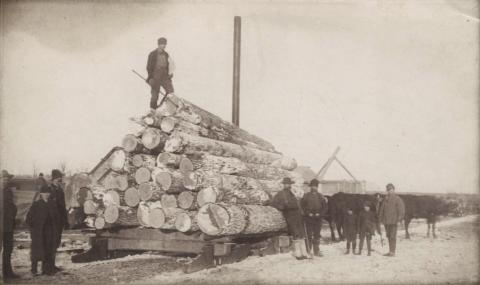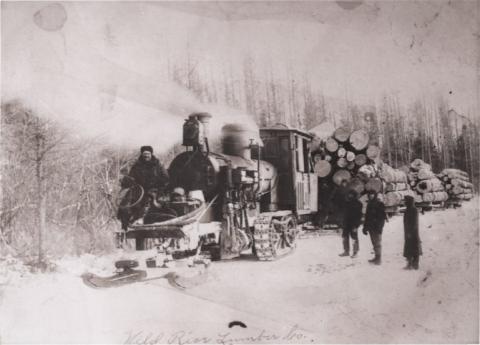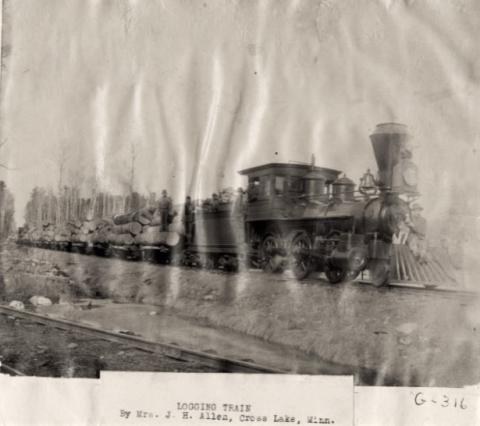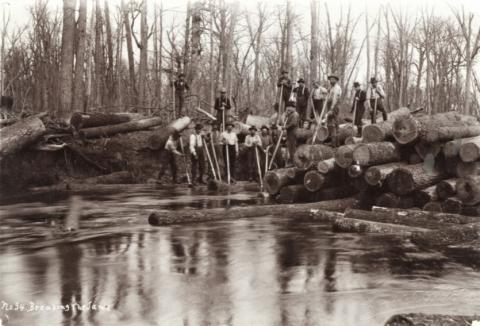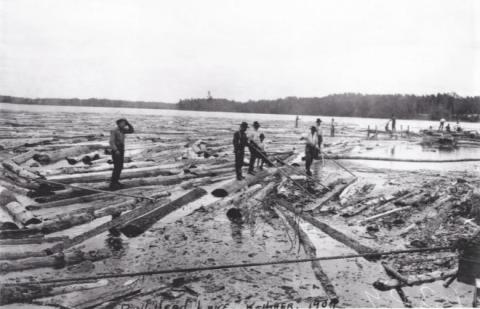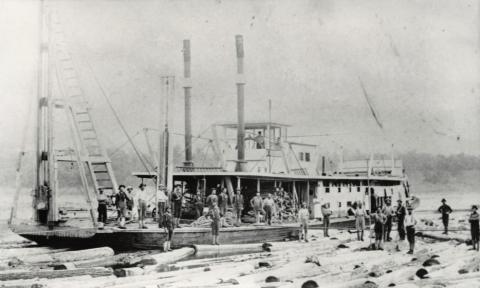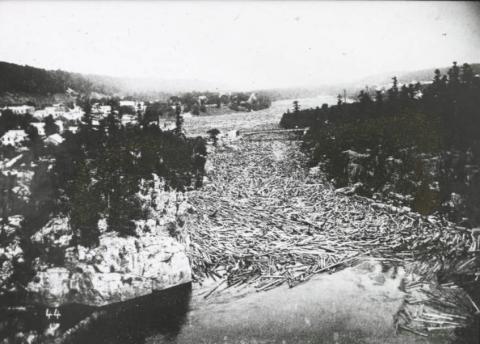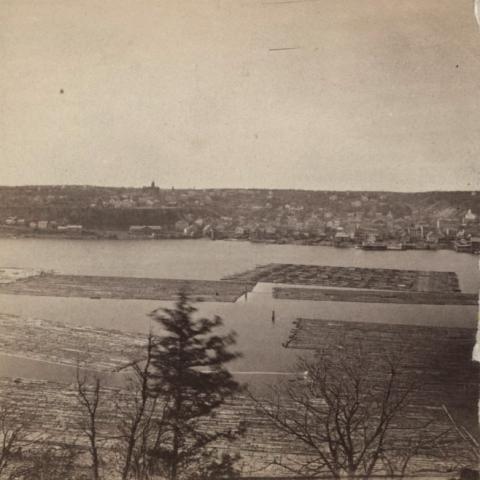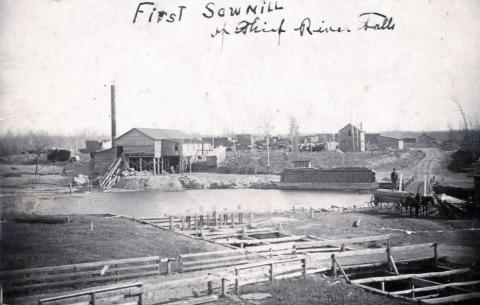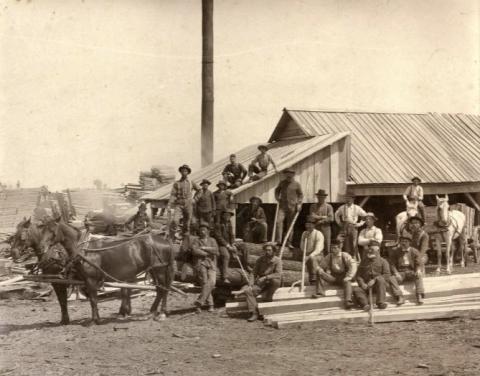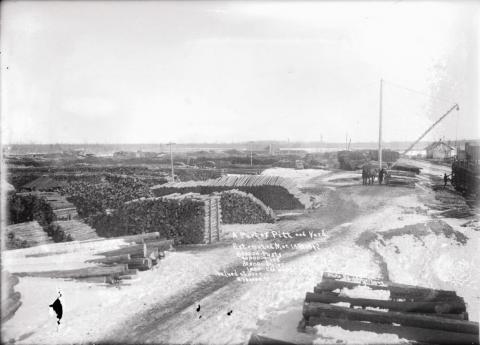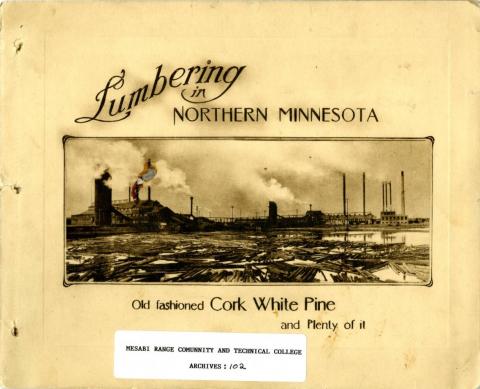Primary Source Set
by Stephanie Hess, Digital Curator, Minnesota Digital Library
For hundreds of years, white pine forests covered the area that is now northern Minnesota. In the 1830s, small logging companies began to harvest the pines, usually using hand tools and water-powered sawmills. These processed pines—now called lumber—provided the raw material for houses, buildings, mining equipment, railroad ties, farming tools, and other equipment. As demand for lumber increased, sawmills and lumber companies also grew. These lumber companies purchased large tracts of land and employed hundreds of lumberjacks to cut down and transport the logs to sawmills across the state.
The lumber industry relied on logging crews, the labor of animals, and various kinds of transportation to turn pine trees into planks of wood. During the winter, loggers would cut down trees using axes and two-man crosscut saws. Then they rolled and pushed the logs on to sleds pulled by oxen or horses and drove them down a logging road to a river, lake, or stream. The logs piled up on the frozen water. When the ice melted in the spring, the loggers drove the floating logs downriver to be processed at a sawmill.
New technology made logging more efficient and cost-effective. Steam-operated vehicles replaced horses and oxen in some logging camps. Steam power also made it possible to build sawmills wherever they were needed, not just on a river or stream. Hot ponds kept the logs from freezing in rivers so they could be cut at sawmills year-round. And steamboats operated as floating dining halls to serve food to the loggers as they drove the logs downstream.
Four hundred lumber companies operated in Minnesota in 1900, and people claimed the lumber industry would continue for decades. But by the 1920s, most of the pine forests had been cut down. The lumber industry moved to the uncut forests out west.
Discussion Questions & Activities
1. Why was logging so important to Minnesota in the late 19th century? How did it contribute to the state's growth?
2. Imagine owning a forest full of trees. Think about all the ways you could use that land. Choose one and explain why you would use the forested land this way instead of doing something else.
3. Lumberjacks lived together in logging camps during Minnesota's frozen winters, and their jobs were often extremely dangerous. But there was usually plenty of work and hearty meals. Would you want to work as a lumberjack? Why or why not?
4. Find a map of Minnesota. Look at the northern parts of the state, where pine forests were plentiful. Now locate Minneapolis and St. Paul, where lumber could be processed or sold. How did the lumber travel from northern Minnesota to the big cities? Trace any rivers and streams you find that connect to the Mississippi and other rivers.
5. Compare the Ann River Logging Company's way to move logs with the Wild River Lumber Company's log moving method. How are they similar? How are they different?
6. Most 19th-century lumber companies cut down all of the trees in an area, a process also known as clear-cut logging. How did that transform the landscape? How does that affect an area's environment? Think about those who lived there—how did their lives change thanks to the lumber industry?
7. How did the lumber industry relate to other industries in Minnesota? Consider industries like mining, railroads, other transportation, farming, milling, commerce, and more.
8. Why do you think people thought logging would continue for decades after 1900? Why were they wrong?
eLibrary Minnesota Resources (for Minnesota residents)
1. Auerbach, Michael P. “Logging Industry.” Salem Press Encyclopedia, 2019. EBSCOhost. Web. 2 Oct. 2020.
2. "Bunyan, Paul." Myths and Legends of the World, edited by John M. Wickersham, Macmillan Reference USA, 2000. Gale In Context: High School. Web. 2 Oct. 2020.
3. "Lumber." Britannica School, Encyclopædia Britannica, 7 Aug. 2020. Web. 2 Oct. 2020.
4. “Lumber.” Columbia Electronic Encyclopedia, 6th Edition, Feb. 2020, p. 1. EBSCOhost. Web. 2 Oct. 2020.
Additional Resources for Research
1. Cartwright, R. L.. "Lumberjack Sky Pilots." MNopedia, Minnesota Historical Society. Web. 2 Oct. 2020.
2. "Flour, Lumber, and Iron." In Northern Lights: The Stories of Minnesota's Past, 2nd ed., by Dave Kenney. St. Paul: Minnesota Historical Society, 2003.
3. Forest History Society, comp. Interviews with Pioneer Lumbermen. Minnesota Historical Society.
4. Gregar, Courtney. "Weyerhaeuser, Frederick (1834–1914)." MNopedia, Minnesota Historical Society. Web. 2 Oct. 2020.
5. Huber, Molly. "Hot Ponds." MNopedia, Minnesota Historical Society. Web. 2 Oct. 2020.
6. Huber, Molly. "Sawmills, Red Lake Indian Reservation." MNopedia, Minnesota Historical Society. Web. 2 Oct. 2020.
7. Johnston, Louis. "Exchange, Industry, and Adaptation: Economics in Minnesota." MNopedia, Minnesota Historical Society. Web. 14 Dec. 2020.
8. Larson, Agnes M. The White Pine Industry in Minnesota: A History. Minneapolis: University of Minnesota Press, 1949.
9. Millikan, William. "Destruction of Bois Forte Ojibwe Homeland, 1891–1929." MNopedia, Minnesota Historical Society. Web. 14 Dec. 2020.
10. The Minnesota Historical Society. Forests, Fields, and the Falls. Web. 2 Oct. 2020.
Published onLast Updated on
